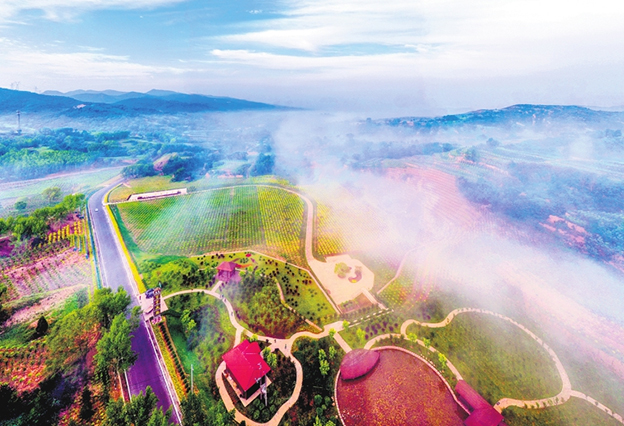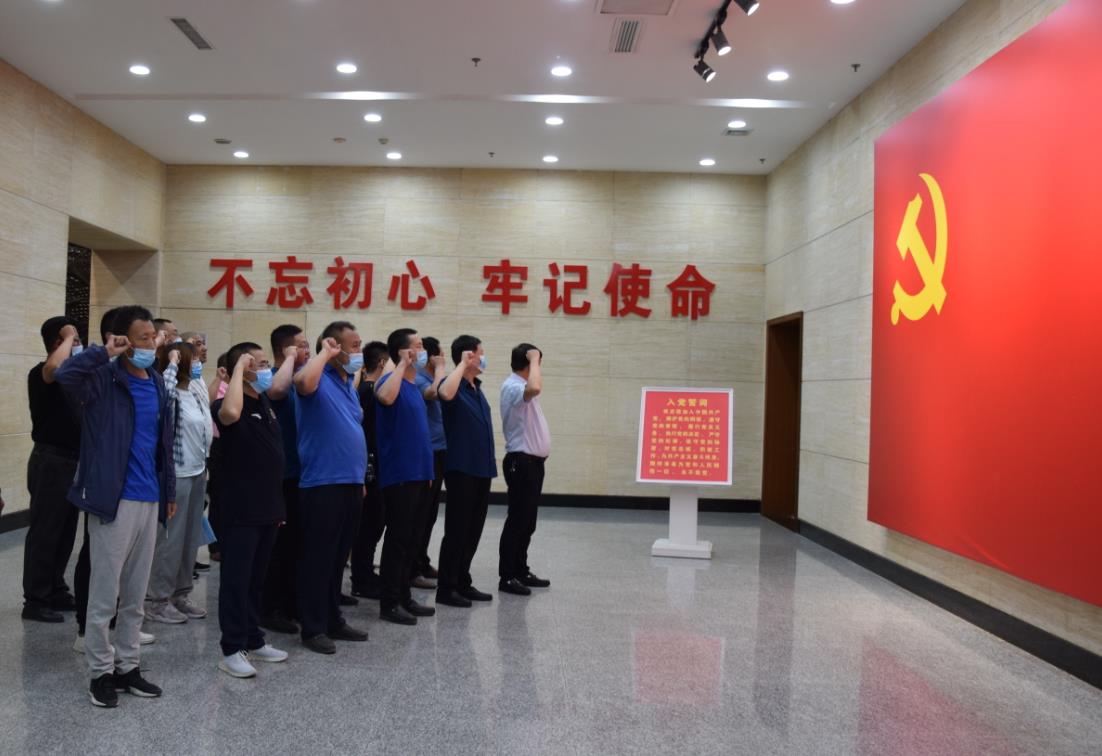
The newly built Taihang No 1 sightseeing road connects more than 280 tourist attractions throughout Zuoquan county.XING LANFU/FOR CHINA DAILY
With nearby mountains and valleys turned into scenic areas, ordinary farmhouses converted into lodges and orchards welcoming city dwellers to pick fruits, Huguan county in Shanxi province is using rural tourism to improve the lives of local villagers.
Li Xiuhong, a resident in the village of Lingdong in Huguan county, said she didn't realize the industry could bring such a significant change to her life and the lives of her fellow villagers.
Li used to be an impoverished farmer in the village that lies at the heart of the Taihang Mountains.
"Life was hard as we used to rely on farming on small pieces of land scattered in the rock-filled valleys,"Li said. "The soil was so thin and infertile that we could hardly make ends meet even though we labored in the fields throughout the year."
The village is surrounded by mountains on all sides and connectivity to the road network was poor, making it difficult for people to travel to its neighboring areas and regions beyond, Li said.
Everything changed when the Phoenix Mountain Resort began operating in 2017.
The resort is a rural tourism cooperative launched by a tourism company in Huguan county. Villagers in Lingdong, after being relocated to a new settlement in the vicinity, became shareholders in the cooperative by contributing the former farmhouses, farmlands, orchards and other properties to the cooperative as their shares.
The resort includes lodges converted from renovated farmhouses and cave houses, hot springs, orchards, animal farms and an amusement park featuring hot-air balloons, horse-racing and other facilities. It provides more than 140 jobs to locals as well as dividends each year.
Li now works in one of the kitchens at the resort, and can earn a monthly salary of 3,000 yuan ($463).
"Almost one-third of residents in Lingdong now work at the resort," Li said.
The village of Lingdong is only one example of how tourism is used to alleviate poverty and improve people's livelihoods in rural Shanxi.
Zuoquan, another county in the Taihang Mountains, is using its cliff-surrounded valleys, high peaks, dense forests and local folk traditions as major tourist draws.
The county's farmers have developed a tradition of singing folk songs and holding folk song contests for hundreds of years.
"A tour of Zuoquan is always accompanied with folk songs. Sometimes the songs you hear are so familiar that you can't help but sing along," said a tourist from the provincial capital of Taiyuan. "The folk songs can make a trip extremely impressive and relaxing."
Realizing that the folk songs are a unique resource for cultural tourism, Zuoquan's tourism authorities launched the Zuoquan Folk Song Gala in 2019. The gala has since grown into an annual event, attracting folk song singers from across the country and involving the wide participation of locals and tourists alike.
As the folk song gala wins increasing popularity across the nation, its major sightseeing attractions, which are collectively known as the"50-kilometer natural gallery", are also gaining recognition among tourists in China.
The Zuoquan section of the Taihang No 1 Highway, which became operational in 2019, has also given a strong boost to the county's rural tourism industry.
Taihang No 1 is a major sightseeing road linking many tourism attractions in the Taihang Mountains. In Zuoquan, more than 280 scenic areas are connected by the road, which makes travel much easier than before.
According to the county's culture and tourism bureau, a total of 846 households in the rural areas have opened bed-and-breakfast businesses, helping more than 2,500 people overcome poverty through lucrative jobs.
Another example of poverty reduction through tourism is Wangjiazhuang village in Pingshun county.
The village's unique selling point is its centuries-old farmhouses and ancient streets.
But locals didn't realize this several years ago.
"We couldn't understand why tourists liked to see such old, shabby houses that even we were bored with," said Yue Xingwang, a local villager.
But local tourism insiders recognized this advantage. Starting in 2016, companies began investing in tourism businesses by renovating old houses, opening lodges and developing sightseeing orchards.
Wangjiazhuang now receives hundreds of tourists every day and the tourism industry has provided more than 300 jobs to local residents.
Zhang Ting contributed to this story.
By YUAN SHENGGAO
 山西路桥:党建引领 建好“四好农村路”山西路桥建设集团党委扎实开展“党建质量提升年”,实施“六大工程”,立足“十四五”高质量、高速度、高效益发展的战略基点,全面提高党建质量和党建引领发展水平,为打造“国内一流的交通基础设施投资、建设、施工现代化企业集团”提供坚强政治保障。
山西路桥:党建引领 建好“四好农村路”山西路桥建设集团党委扎实开展“党建质量提升年”,实施“六大工程”,立足“十四五”高质量、高速度、高效益发展的战略基点,全面提高党建质量和党建引领发展水平,为打造“国内一流的交通基础设施投资、建设、施工现代化企业集团”提供坚强政治保障。
 常住人口3491万 山西人口普查数据"出炉"山西省统计局向社会通报山西省第七次全国人口普查主要数据。数据显示,山西省常住人口为34915616人,比2010年(第六次全国人口普查数据,下同)减少2.23%,年平均减少0.23%。山西省常住人口总量减少,主要受人口流动变化等因素影响。
常住人口3491万 山西人口普查数据"出炉"山西省统计局向社会通报山西省第七次全国人口普查主要数据。数据显示,山西省常住人口为34915616人,比2010年(第六次全国人口普查数据,下同)减少2.23%,年平均减少0.23%。山西省常住人口总量减少,主要受人口流动变化等因素影响。